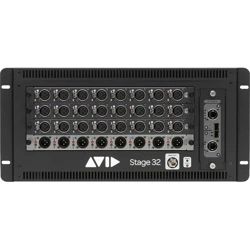Loading ...
Loading ...
Loading ...

Plug-Ins 288
Routing Plug-Ins as Bus Processors (Effect Send/Return)
Plug-Ins can be used on buses for send-and-return processing with effects such as reverb and delay. A plug-in is configured for bus
processing by assigning an Aux, Group, Matrix, Main, Monitor output, or a Direct Out as the plug-in input source, then assigning
the output of the plug-in to an input channel, or to a hardware output, as follows:
• Return bus-fed plug-ins to an input channel to establish an effects send-and-return path.
• Route bus-fed plug-ins to a hardware output for specialized processing needs (such as feeding an external crossover).
You assign plug-ins for bus processing from the Plug-Ins screen.
To use a plug-in as a bus processor:
1 Go to the Plug-Ins page.
2 Make sure the plug-in is installed and assigned to a rack slot.
3 Select the Input selector at the top of the corresponding rack slot, choose Bus Outs, then choose the desired output bus from the
sub-menus.
4 Select the Plug-In Output selector and choose an input channel or a hardware output. Depending on the plug-in's output format
(mono/stereo), available channels are lit (available for assignment) or unlit (unavailable for assignment) depending on their for-
mat.
When a bus-fed plug-in has both its input source and output assigned, it appears similar to the following in the rack:
Input selector and sub-menus
Assigning plug-in output to an input channel
When routing a plug-in with a stereo output to an input channel, make sure the input channel is a stereo channel. See
Make Se-
lected Mono Strips Stereo/Make Selected Stereo Strip Mono.
An assigned bus-fed plug-in shown in the rack
Loading ...
Loading ...
Loading ...
